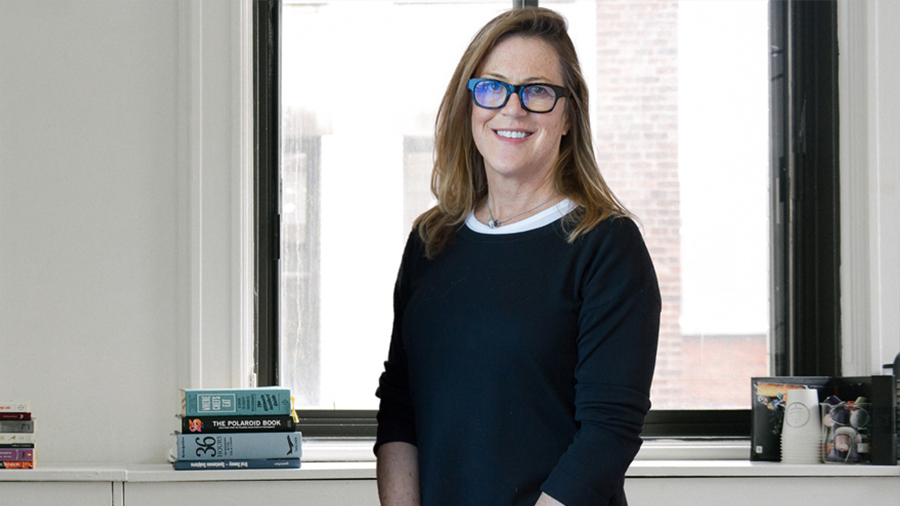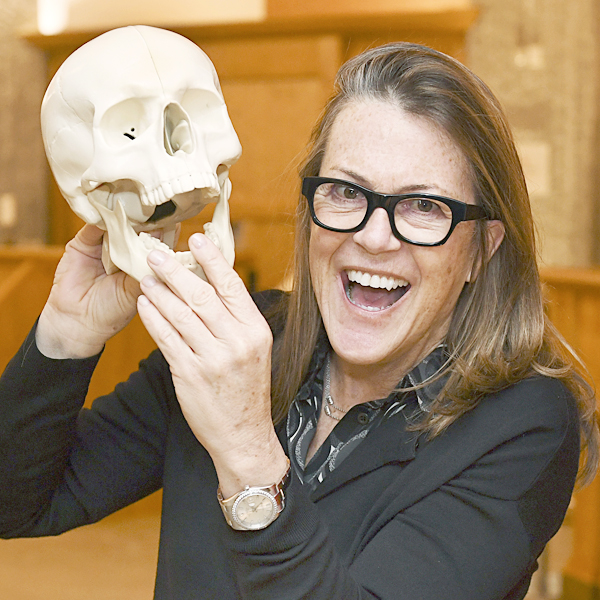Getting to Know: Sabine Girod
Sabine Girod is a specialist in Oral and Maxillofacial Surgery (OMS) and a Professor of Surgery. She is the OMS Service Chief at Stanford University in the United States. With the AO Foundation, Girod is the Community Development Commission Chair.

Where are you now?
At Stanford University, in California. I decided to move here from Germany in 2000. It’s an outstanding school and a beautiful place.
What's your official title? What does it mean to you?
Professor and Chief of Oral Medicine & Maxillofacial Surgery Service. The titles are a description of my current academic position and my role at the university’s medical school.
What is your educational background?
I went to dental school first, then to medical school, and then I went on to get a PhD. I did my residency in Germany, and spent two years as a medical student, and later as a postdoctoral fellow at Harvard Medical School in Boston, doing research at the Dana Farber Cancer Institute.
Why did you become a surgeon?
As a child, I liked working with my hands and creating things. I had a lot of fun playing at the “Adventure Playgrounds” in Germany where I grew up, which were basically fields with a lot of construction materials, including wood, nails, hammers, and often puddles, and mud! You could build forts, bridges, whatever you wanted.
I also love to read and Alexander Solzchnizyn’s “Cancer Ward” impressed me a lot when I read it as a teenager. I then decided that going to dental school would suit my interests. When I accidentally met a female OMS surgeon and I saw what she did, it was a revelation for me. I knew that this is what I wanted to do, and so I enrolled in medical school, and later, for a residency. As for many others, it was a person and chance meeting that changed my life’s direction.
"When I accidentally met a female OMS surgeon and I saw what she did, it was a revelation for me. I knew that this is what I wanted to do, and so I enrolled in medical school, and later, for a residency. As for many others, it was a person and chance meeting that changed my life’s direction."
What's the best professional advice that anyone ever gave you?
My first teacher and mentor was a great role model as a surgeon and a leader in OMS. He taught us that first and foremost the team serves the patient and you are responsible to lead with exemplary behavior and communication.
What books are on your nightstand?
Too many, and I am always looking for the next good book. Reading and running are my hobbies. With audiobooks, I sometimes do both at the same time. Right now, I am reading “Thank You for Being Late: An Optimist Guide to Thriving in the Age of Acceleration” by Thomas Friedman, and I am listening to “The Undoing Project” by Michael Lewis. That is just by chance. I also read a lot of thrillers and fiction.
Coffee or tea?
An Espresso latte in the morning. Tea with milk at 17:00.
Name five artists on your iPod
Wagner, Mahler, Bruckner, Glen Close, Amy Winehouse, and whatever my son listens to.
What is most fulfilling to you in your work?
I love being in the clinic and meeting new patients who want to know whether or not I can help them. In many cases, I can. We talk, and their expectations change to having hope and confidence. Then, within a couple of hours of working with my hands, I can fulfill their dream to look “normal.”
"I love being in the clinic and meeting new patients who want to know whether or not I can help them."
Tell us about the most important experience in your life as a surgeon.
Every once in a while, a patient comes back to visit me to share with me how much their life has changed from my work. Among others, I distinctly remember a teenager who did not want to have his picture taken in family photos. He did not look at anyone or speak much. Years later, he came back just to visit. I almost did not recognize the confident and outgoing young man who had finished college and was just coming back from spending a semester abroad in Scotland. There is no better compliment.
If you weren't working in the medical field, what would your dream job be?
I believe education—especially for women—is the key to a better life in anywhere in the world. I would work for a government organization or an NGO to help create effective programs to educate and support people to help themselves.
Do you have a mantra or favorite saying?
“Always look at the bright side of life!”
In a few words, what does AO CMF mean to you?
I got involved in the AO 20 years ago, after participating in a trauma course that I very much enjoyed. I then started volunteering for the AO as a course faculty member. I really like that all specialties involved in craniofacial reconstruction work together in research, product development, and teaching, to create a standard of excellence in craniofacial trauma care worldwide. The global faculty, who donate their time, are all outstanding in their field. There is also a personal camaraderie among the faculty, who are united in their goal to educate and improve. It is a place where I have developed many personal friendships.
In my current position as Web Editor in Chief, I aim to develop an online platform that allows surgeons in training and experts from all over the world to attain access to AO CMF’s educational material, to be able to network with each other wherever they are, and also discuss any case they need help with. Our focus is to also improve the online connection of surgeons in developing countries, in collaboration with the AO Alliance, who is developing courses in these countries. My goal is to provide access to the AO CMF community for everyone who is interested and has a cell phone by the time that my term is over.

